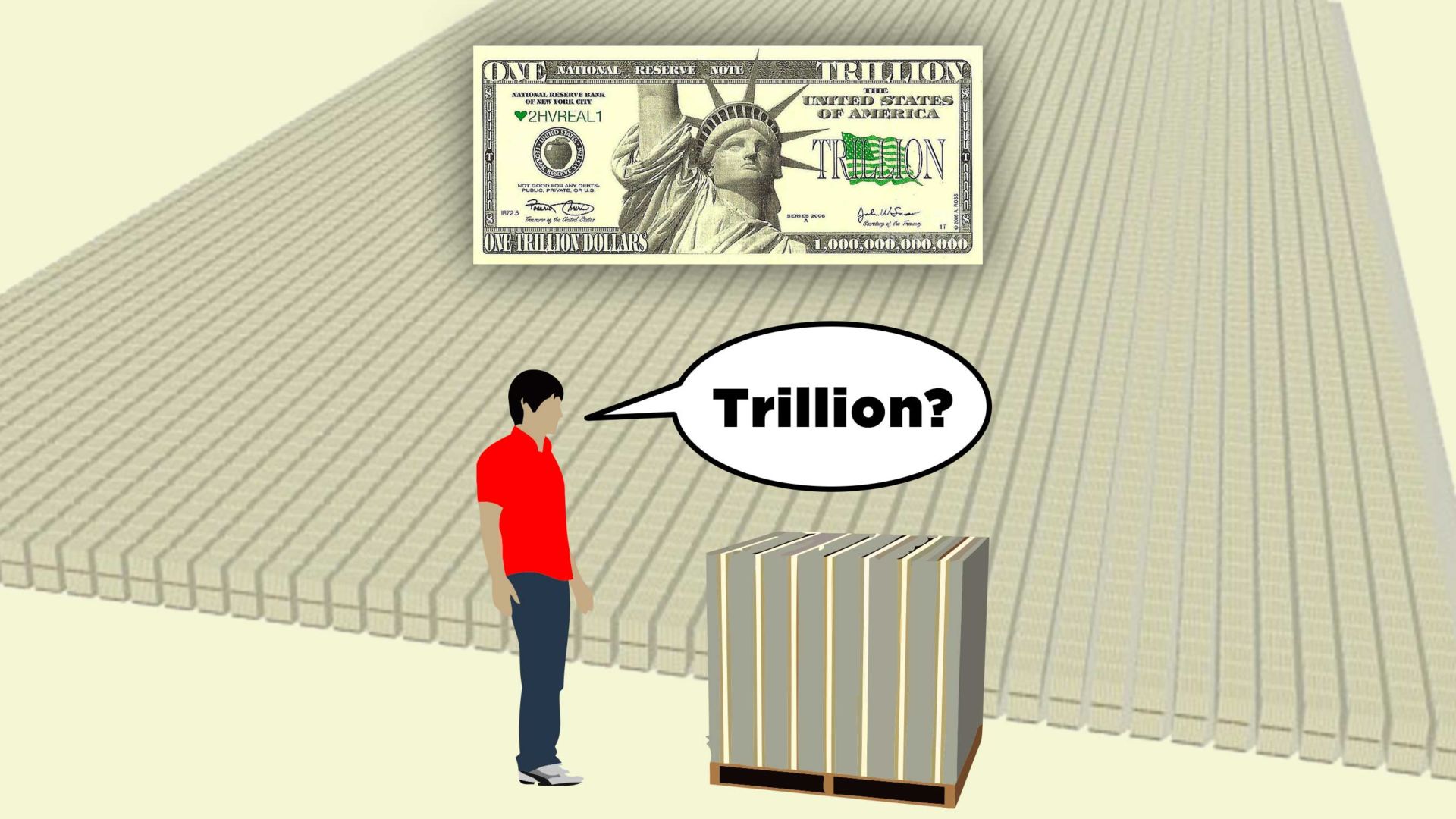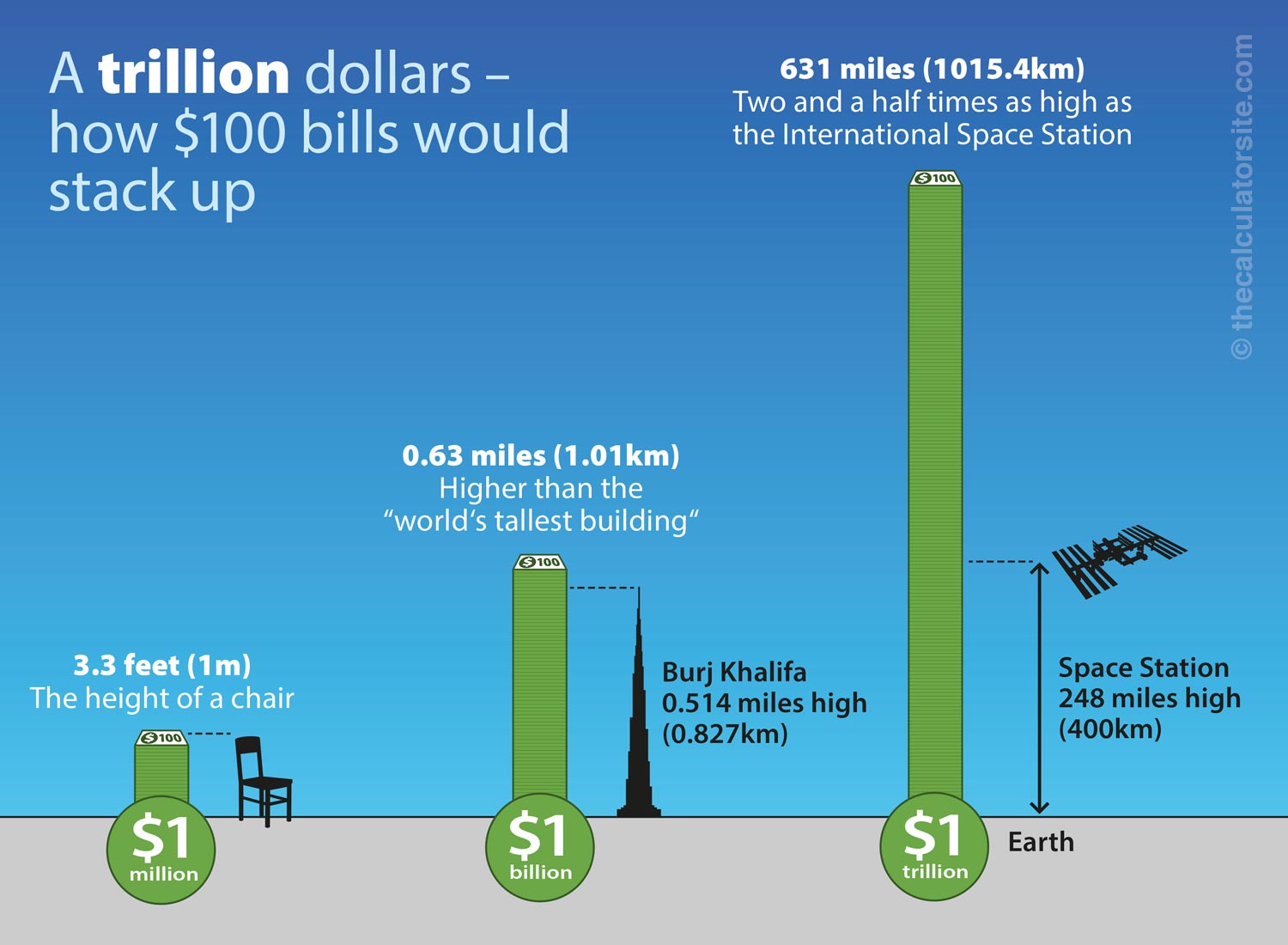What's Beyond Trillion? Exploring The Numbers That’ll Blow Your Mind
Alright, let’s dive straight into this. You’ve probably heard of a million, billion, and trillion before. But have you ever wondered what’s beyond trillion? It’s not just some random number—it’s a concept that’s mind-blowing if you really think about it. We’re talking about numbers so massive they make a trillion look like pocket change. If you’re ready to explore the world of big numbers, buckle up, because we’re about to take you on a wild ride through the universe of digits.
When most people think of "big numbers," they stop at trillion. After all, trillion is already a number so enormous it’s hard to wrap your head around. But guess what? The universe of numbers doesn’t end there. Beyond trillion lies an entire galaxy of figures that are so large, they almost feel fictional. From quadrillion to googolplex, we’re diving deep into the world of numbers that’ll make you question the limits of human comprehension.
Now, before we get into the nitty-gritty of what’s beyond trillion, let’s set the stage. Numbers aren’t just abstract concepts—they’re tools that help us measure everything from the size of the universe to the number of grains of sand on Earth. Understanding these numbers isn’t just about math; it’s about expanding our minds and appreciating the vastness of the world around us. So, are you ready to go beyond trillion? Let’s do this.
- Is Brett Waterman Married Unveiling The Truth Behind The Relationship Status Of This Talented Actor
- Brian Chesky Wife The Untold Story Of Love And Success
Why Understanding Big Numbers Matters
Let’s face it, most of us don’t deal with numbers like trillion in our daily lives. But that doesn’t mean these numbers aren’t important. In fact, understanding big numbers is crucial in fields like science, economics, and technology. Think about it—when astronomers talk about the distance between stars, they’re not using millions or billions. They’re talking about numbers far beyond trillion.
For example, the observable universe is estimated to be around **93 billion light-years in diameter**. That’s a number so big it’s almost impossible to comprehend. But by breaking it down and understanding the scale, we can start to appreciate just how vast the universe really is. Whether you’re calculating the national debt of a country or trying to grasp the size of the Milky Way, big numbers play a critical role in shaping our understanding of the world.
Big Numbers in Everyday Life
Okay, so you might be thinking, “But how does this affect me?” Fair question. While most of us won’t encounter numbers beyond trillion in our day-to-day lives, they’re more relevant than you think. For instance, when you hear about the global economy or the number of cells in the human body, you’re dealing with numbers that stretch far beyond what we can easily visualize.
- Crazy Jam Jam Leaks Unveiling The Hype The Truth And The Craze
- Catch The Best Movies Online Katmovies Your Ultimate Movie Hub
Here’s a fun fact: the human body has around **37.2 trillion cells**. That’s just one person. Now imagine the number of cells in the entire human population. Yeah, it’s a lot. Understanding these numbers helps us appreciate the complexity of life and the universe. And hey, who knows? Maybe one day you’ll need to impress someone at a dinner party with your knowledge of quadrillion.
What Comes After Trillion? The Numbers Beyond
Alright, let’s break it down. After trillion, the numbers just keep getting bigger. First up is quadrillion. Then comes quintillion, sextillion, septillion, and so on. But what do these numbers even mean? Let’s take a closer look:
- Quadrillion: That’s a 1 followed by 15 zeros. In some countries, it’s called a billiard.
- Quintillion: A 1 followed by 18 zeros. This is where things start to get really big.
- Sextillion: A 1 followed by 21 zeros. Now we’re talking about numbers that are almost unimaginable.
But wait, there’s more. Beyond sextillion, we have septillion, octillion, nonillion, and decillion. And if you think decillion is big, just wait until we get to googol and googolplex.
How to Visualize These Numbers
Trying to visualize numbers like quadrillion or quintillion is tough, but not impossible. Let’s use some real-world examples to help:
- A single grain of sand is tiny, right? Well, there are around **7.5 quintillion grains of sand** on Earth. That’s a number so big it’s hard to believe.
- Now think about stars. There are around **100 sextillion stars** in the observable universe. That’s more stars than grains of sand on Earth.
By comparing these numbers to things we can see and touch, we can start to grasp just how massive they really are. And trust me, it’s a trip.
The Concept of Googol and Googolplex
Alright, now we’re getting into the really big stuff. A googol is a 1 followed by 100 zeros. That’s right, 100 zeros. It’s a number so large it’s hard to even write it out. But here’s the thing: a googolplex is even bigger. A googolplex is a 1 followed by a googol of zeros. Yeah, you read that right.
To give you an idea of how big a googolplex is, let’s think about it this way: if you tried to write out a googolplex, you’d need more paper than exists in the universe. And even if you could, it would take longer than the age of the universe to write it all down. Crazy, right?
Where Did the Term "Googol" Come From?
Fun fact: the term "googol" was actually invented by a 9-year-old kid named Milton Sirotta. He was the nephew of mathematician Edward Kasner, who asked him to come up with a name for a really big number. And thus, the googol was born. Later, the term inspired the name of a little company you might have heard of—Google.
Real-World Applications of Big Numbers
So, we’ve talked about how big these numbers are, but what’s the point? As it turns out, big numbers have plenty of real-world applications. Here are just a few examples:
- Astronomy: When astronomers talk about the size of the universe, they’re dealing with numbers far beyond trillion. For instance, the observable universe is estimated to contain around **10 to the power of 80 atoms**.
- Economics: In finance, big numbers are used to measure things like national debt, global GDP, and stock market values. For example, the global GDP in 2022 was around **$96 trillion**.
- Technology: In the world of computing, big numbers are used to measure things like data storage and processing power. For instance, a single exabyte of data is equal to **1 billion gigabytes**.
As you can see, big numbers aren’t just theoretical—they have practical applications in fields that affect our daily lives.
How Big Numbers Impact Our Lives
Even if you don’t work in science or finance, big numbers still impact your life in ways you might not realize. For example, when you use your smartphone or stream a movie online, you’re dealing with data that’s measured in terabytes, petabytes, and even exabytes. And when you hear about the national debt or the cost of healthcare, you’re dealing with numbers that stretch far beyond what most of us can easily comprehend.
Breaking Down the Scale of Big Numbers
Let’s take a moment to break down the scale of these numbers. To do that, we’ll use a technique called "powers of ten." Here’s how it works:
- Million: 10 to the power of 6
- Billion: 10 to the power of 9
- Trillion: 10 to the power of 12
- Quadrillion: 10 to the power of 15
- Quintillion: 10 to the power of 18
By using powers of ten, we can start to see the pattern and understand how these numbers grow exponentially. It’s like climbing a staircase where each step is much bigger than the last.
Why Powers of Ten Matter
Powers of ten aren’t just a math trick—they’re a way of understanding the universe. By breaking down big numbers into smaller, more manageable chunks, we can start to appreciate their scale. For example, when astronomers talk about the distance between stars, they use light-years, which are measured in powers of ten. And when scientists talk about the size of atoms, they use nanometers, which are also measured in powers of ten.
Fun Facts About Big Numbers
Let’s wrap things up with some fun facts about big numbers:
- A googol is so big that if you tried to count to it, you’d need more time than the universe has existed.
- The number of possible chess moves is around **10 to the power of 120**, which is more than the number of atoms in the observable universe.
- In some cultures, numbers like quadrillion and quintillion have different names. For example, in India, a lakh is equal to 100,000, and a crore is equal to 10 million.
Big numbers are fascinating, and they’re all around us if you know where to look.
Why Big Numbers Are Important
At the end of the day, understanding big numbers isn’t just about math—it’s about expanding our minds and appreciating the vastness of the universe. Whether you’re counting grains of sand, stars in the sky, or atoms in your body, big numbers help us make sense of the world around us.
Conclusion: Embrace the World of Big Numbers
Alright, we’ve covered a lot of ground here. From trillion to googolplex, we’ve explored the world of big numbers and discovered just how massive they really are. But here’s the thing: numbers like these aren’t just abstract concepts—they’re tools that help us understand the universe. Whether you’re an astronomer, economist, or just someone who loves learning new things, big numbers have something to offer everyone.
So, what’s next? Why not take a moment to share this article with a friend? Or leave a comment and let us know what you think about numbers beyond trillion. And hey, if you’re feeling adventurous, why not try counting to a quadrillion? (Just kidding—don’t do that.)
Until next time, keep exploring, keep learning, and keep your mind open to the possibilities of the universe. Because when it comes to numbers, the sky’s the limit—or maybe even beyond.
Table of Contents
- Why Understanding Big Numbers Matters
- What Comes After Trillion? The Numbers Beyond
- The Concept of Googol and Googolplex
- Real-World Applications of Big Numbers
- Breaking Down the Scale of Big Numbers
- Fun Facts About Big Numbers
- Michael Che Wife The Woman Behind The Comedian
- Telegram Qarxis The Ultimate Guide To Understanding This Revolutionary Tool

What Comes After A Trillion? Do You Know?

How Much is a TRILLION?

What Number Comes After Trillion?